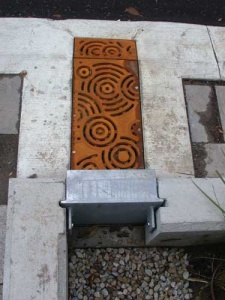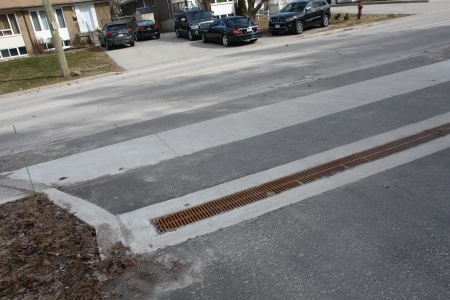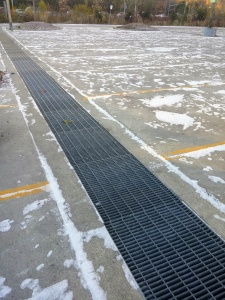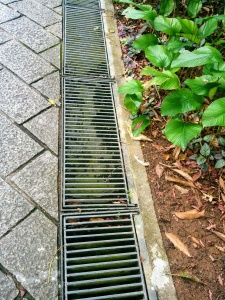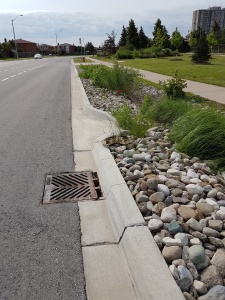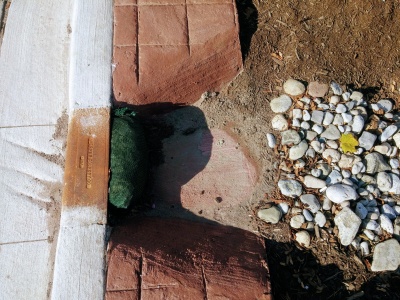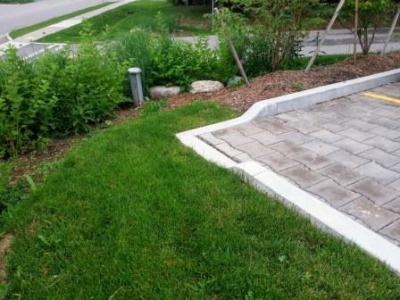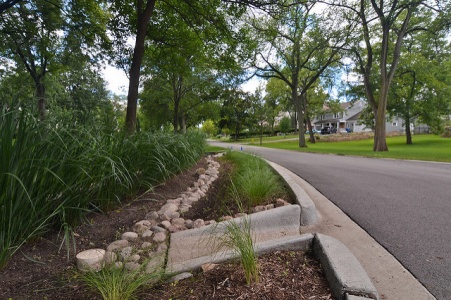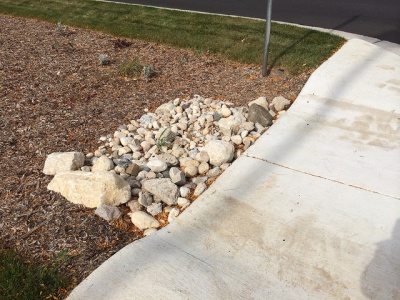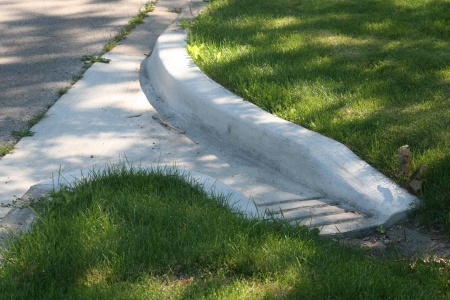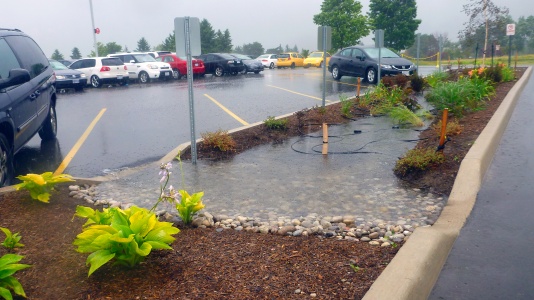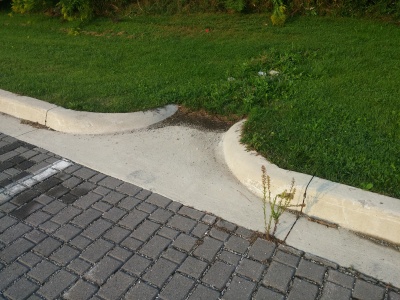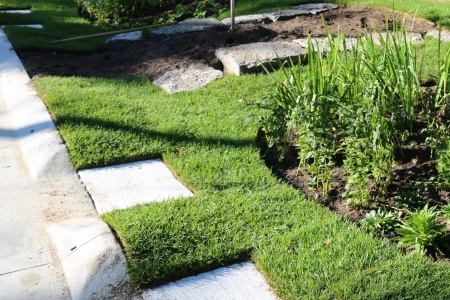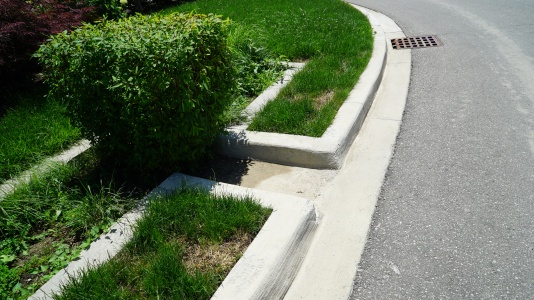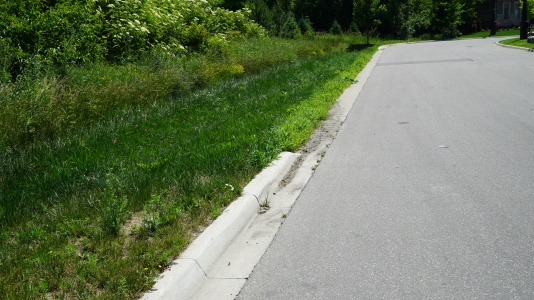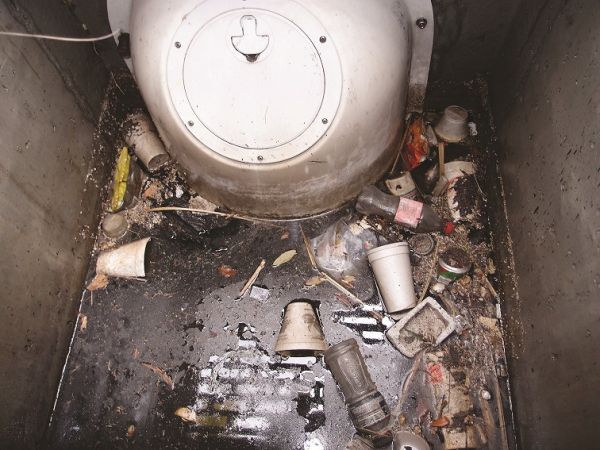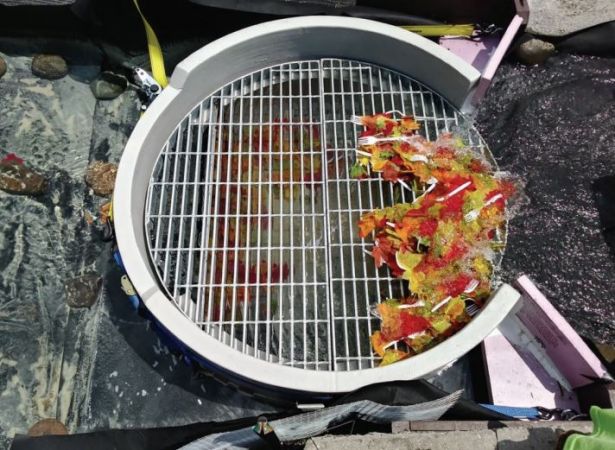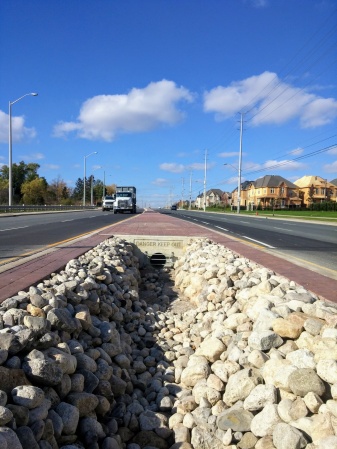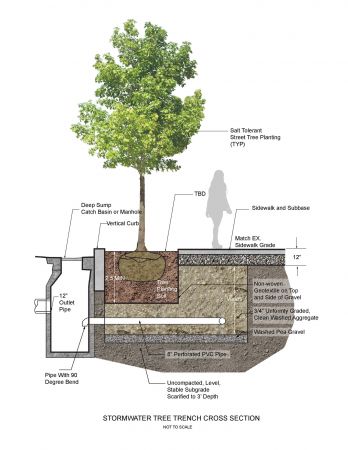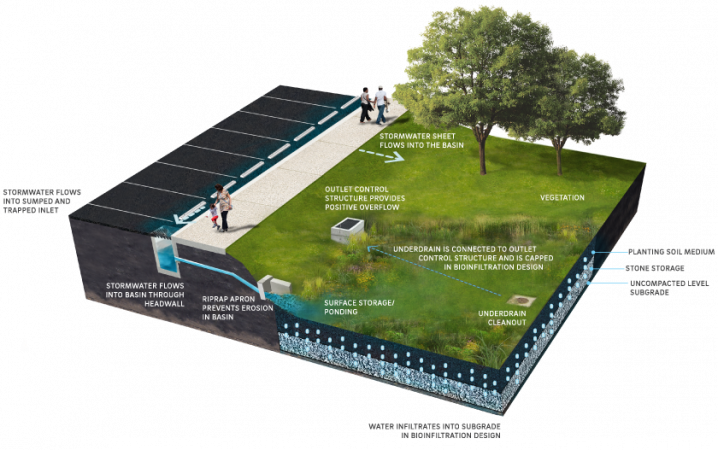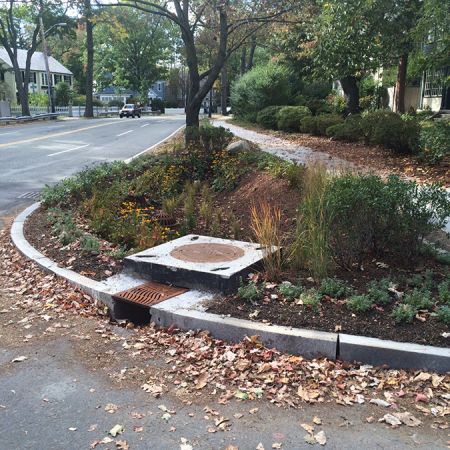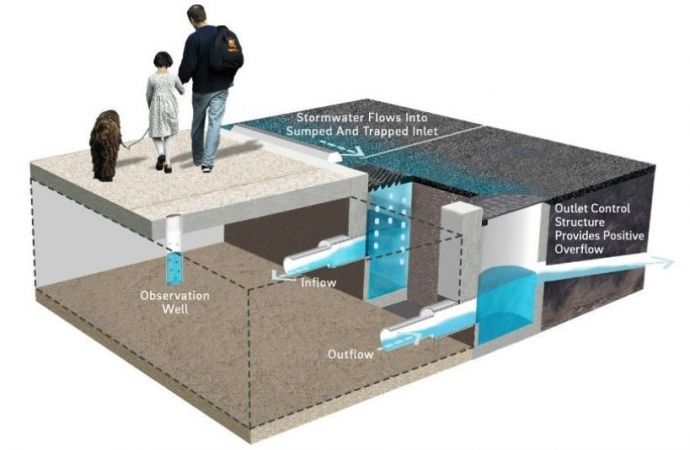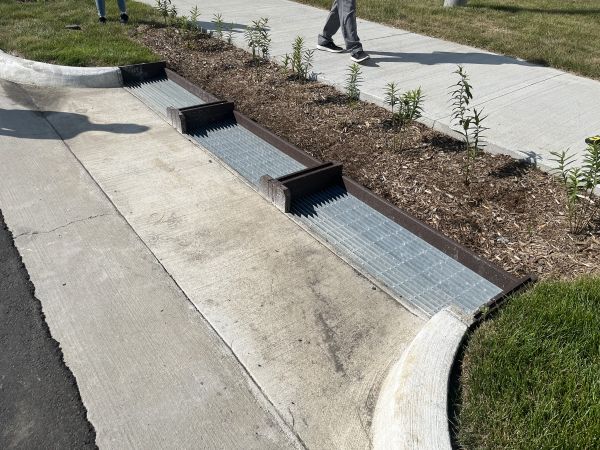- A long, covered channel that collects directs water into the BMP.
- An excellent solution for streets where walking across the entire surface is to be encouraged. They can be designed as detectable edges or part of a detectable edge, and may be used to help define curbless or 'complete streets'.
- Trenches may either be shallow (where runoff volume is less of an issue) or deep and covered by a metal grate. Deeper trench drains may gather sediment and require frequent maintenance.
- Drains may be configured either perpendicular or parallel to the flow direction of the roadway, collecting runoff and directing to a single inlet in the BMP.
|
- Inlet aprons or depressions increase inflow effectiveness of curb cuts.
- Steeply angled aprons can be hazardous, especially to people bicycling. Curbside and protected bike lanes along concrete aprons should be at least 1.8 m to give cyclists adequate clear width from the curb and any pavement seams. Aprons can also be marked visually to indicate their perimeter.
- For aprons into bioretention, the curb may angle into the cell to improve conveyance of gutter flow into the facility. Aprons typically drop 50 mm into the bioretention cell, with another 50 mm drop behind the curb to maintain inflow as debris collects.
- A depressed concrete apron can be cast in place or retrofitted in by grinding down the existing concrete pavement.
- Where the curb alignment along the street is straight, the curb opening may optionally have a bar across the top of the inlet.
|
- An inlet sump is recommended to settle and separate sediment from runoff where a large amount of debris is expected.
- Water drains into a catch basin, where debris settles in its sump. After pretreatment, water drains via a pipe or opening into the BMP.
- The sump can be directly connected to a perforated underdrain pipe to distribute the flow to the bioretention or connected tree pits.
- Sump inlets should not be sited where pedestrians will have to negotiate with them.
|
- Runoff in the gutter drops into a grate-covered drain before flowing into the BMP. Drain covers must be compatible with bicycling and walking; grid covers are preferred.
- Depressed drains are a potential solution for bioretention cells on sloped streets where directing runoff into the cell is a challenge.
- This style of inlet can be combined with a curb cut, to maintain capacity in case debris clogs the grate.
|
Trench drain that outlets to a bioswale at the LSRCA Office in Newmarket, ON
Trench drain in parking lot of Evergreen brickworks, Toronto ON
This trench drain has easily opened, hinged sections for maintenance, Singpore
|
OPSD 605.040 Asphalt Spillway inlet to biofilter swale and road catch basin overflow outlet. County Court Blvd., Brampton, ON.
This curb cut has been sawn into existing concrete as part of a retrofit. Note the temporary (erosion log) and permanent stone erosion control measures in place. Mississauga Road, ON.
Curb cut into a bioretention facility in Hinsdale, IL. Stone in the center of the facility reduces erosion and dissipates power inflow around the inlet area. A monitoring/maintenance well can be seen in the foreground. Photo credit: CNT
Curb cut into a bioretention facility in Brown Deer, WI. Stone is used to reduce erosion around the inlet area. Photo credit: Aaron Volkening
Curb cut into a bioretention facility in Ajax, ON.
Stone lined inlet at IMAX site in Mississauga
The grading around this inlet prevents flow in the correct direction. i.e. from the pavement onto the grass. Not too critical in this example, as the surface is permeable pavements.
Curb cut leading into a small bioretention cell in Brampton, ON.
Curb cut leading to a bioswale in Brampton, ON.
|
This pretreatment device, known as a baffle helps to remove trash, oil, TSS, larger sediments (silts, sands, etc.) and other floatables in roadway catch basins. This picture was taken of a SNOUT BAFL in Myrtle Beach, S.C. (Mullen, 2022)[1]
Example of an overland flow sump, capturing stormwater runoff from the adjacent roadway. This example showcases a Rain Guardian(TM) Turret structure with a metal grate overtop to capture larger floatables, trash and detritus from entering a stormwater facility or in this case a bioretention LID feature[2].
This inlet channels flow from an underground pretreatment unit onto the surface of a large bioswale, Mississauga Road, ON
A stormwater tree trench, including a sump inlet design used as part of pretreatment. The feature is located in the City of Cambridge, Massachusetts, US. The design was developed and lead by HDR Inc., and Halvorson, Tighe & Bond Studio (Halvorson, Tighe & Bond Studio, n.d.)[3]
Example of a sump inlet being used in conjunction with a large bioretention basin feature, located in park space receiving stormwater off of the adjacent roadway (Source: Philadelphia Water Department, n.d.)[4]
An inlet sump leading into a bioretention bump out for traffic calming. Inlet sumps help both settle and separate sediment from stormwater road runoff before depositing excess sediment and silt into an infiltration BMP. These sumps allow stormwater to flow into the feature through an underdrain pipe (Source: NACTO, 2017)[5]
Example of a sump inlet allowing sediment to settle out of influent stormwater before entering a large infiltration chamber housed under the parking lot (Source: Philadelphia Water Department. 2020)[6]
|
Template:Depressed drains: Gallery
|
